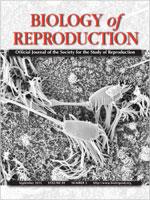Uropathogenic Escherichia coli (UPEC)-associated epididymitis is commonly diagnosed in outpatient settings. Although the infection can be successfully cleared using antimicrobial medications, 40% of patients unexplainably show persistent impaired semen parameters even after treatment. Our aim was to investigate whether pathogenic UPEC and its associated virulence factor hemolysin (hlyA) perturb the structural and functional integrity of both the epididymis and sperm, actions that may be responsible for the observed impairment and possibly a reduction of fertilization capabilities. Semen collected from patients diagnosed with E. coli-only related epididymitis showed that sperm counts were low 14 days postantimicrobial treatment regardless of hlyA status. At Day 84 following treatment, hlyA production correlated with approximately 4-fold lower sperm concentrations than in men with hlyA-negative strains. In vivo experiments with the hlyA-producing UPEC CFT073 strain in a murine epididymitis model showed that just 3 days postinfection, structural damage to the epididymis (epithelial damage, leukocyte infiltration, and edema formation) was present. This was more severe in UPEC CFT073 compared to nonpathogenic E. coli (NPEC 470) infection. Moreover, pathogenic UPEC strains prematurely activated the acrosome in vivo and in vitro. Raman microspectroscopy revealed that UPEC CFT073 undermined sperm integrity by inducing nuclear DNA damage. Consistent with these observations, the in vitro fertilization capability of hlyA-treated mouse sperm was completely abolished, although sperm were motile. These findings provide new insights into understanding the possible processes underlying clinical manifestations of acute epididymitis.
How to translate text using browser tools
10 July 2013
Structural and Functional Integrity of Spermatozoa Is Compromised as a Consequence of Acute Uropathogenic E. coli-Associated Epididymitis
Tali Lang,
Maria Dechant,
Victoria Sanchez,
Joachim Wistuba,
Michele Boiani,
Adrian Pilatz,
Angelika Stammler,
Ralf Middendorff,
Gerhard Schuler,
Sudhanshu Bhushan,
Svetlin Tchatalbachev,
Frank Wübbeling,
Martin Burger,
Trinad Chakraborty,
Con Mallidis,
Andreas Meinhardt
ACCESS THE FULL ARTICLE

Biology of Reproduction
Vol. 89 • No. 3
September 2013
Vol. 89 • No. 3
September 2013
acrosome reaction
bacterial epididymitis
epididymis
Male infertility
sperm DNA fragmentation




